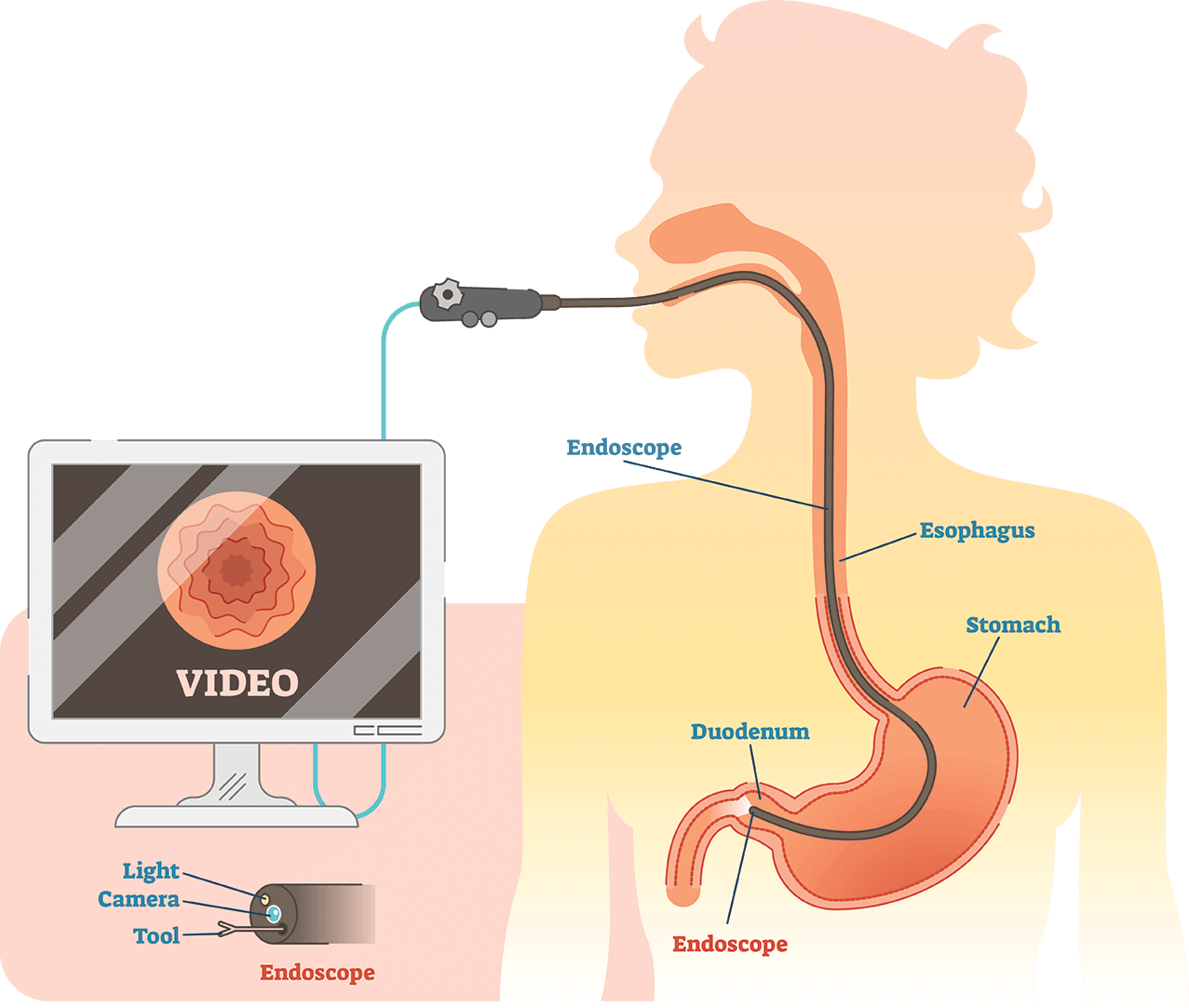endoscopic ultrasound
what is an
endoscopic ultrasound?

Endoscopic ultrasound (EUS) is an advanced endoscopic procedure that allows us to look beyond the walls of the gastrointestinal tract. Your doctor will arrange this for you if we need to examine a lump, growth, or cyst within your gastrointestinal tract, or in the organs adjacent to the gastrointestinal tract. The procedure is similar to a gastroscopy, but involves an internal ultrasound examination.
The procedure is commonly undertaken if your doctor suspects that you have inflammation of the oesophagus (the pipe which connects the throat to the stomach), an ulcer, inflammation, or other abnormality of the oesophagus, stomach, or duodenum.
Endoscopic ultrasound involves using an ultrasound probe on the echoendoscope to examine areas next to the gastrointestinal tract closely. It offers the opportunity to perform therapies under direct (ultrasound) guidance, rather than having them performed through the skin or with open surgery.
You should have nothing to eat or drink for 4 hours before your procedure. If this test is being done in conjunction with a colonoscopy, it is enough to follow only the colonoscopy instructions.
You will be given a sedative through a vein in the arm or hand before the procedure to make you more comfortable.
As drugs are used, and x-ray screening is sometimes used following the procedure, it is essential for female patients that there is no possibility of pregnancy. You must advise the nursing staff if you have any doubts about this.
You should advise the nursing staff if you are sensitive (allergic) to any drug or other substance.
Please do not stop any blood thinners or anti-coagulants unless directly advised to by your doctor. You should also inform your doctor if you have heart valve disease or have a pacemaker implanted.
The echoendoscope is a flexible tube about 11mm in diameter. It allows full colour inspection of the oesophagus, stomach and duodenum. The internal ultrasound probe is used to take pictures up close of the stomach, oesophagus, duodenum, pancreas, liver, and gallbladder, and the pipes that connect these organs. A needle can be inserted into abnormal appearing tissue under direct ultrasound guidance, to make sure important structures are not harmed. It also allows biopsies to be taken from the small bowel and other areas.
Gastrointestinal endoscopy is usually simple and safe. It is very unlikely to cause any serious problems for patients.
Extremely rarely, individual patients may have a reaction to the sedation or damage to the oesophagus at the time of examination. Such complications are extremely rare, however, if you wish to have full details of all possible rare complications discussed before the procedure, you should inform your doctor.
If a needle is used to take a sample of tissue or fluid, there are small risks of infection, bleeding and, if the pancreas is involved, pancreatitis.
The procedure will take 30 min to 1 hour and you will be sleepy for about an hour afterwards. A relative or friend must pick you up. You may not leave unaccompanied.
If you have any severe abdominal pain, bleeding, fever or other symptoms that cause you concern, you should contact your doctor immediately.
